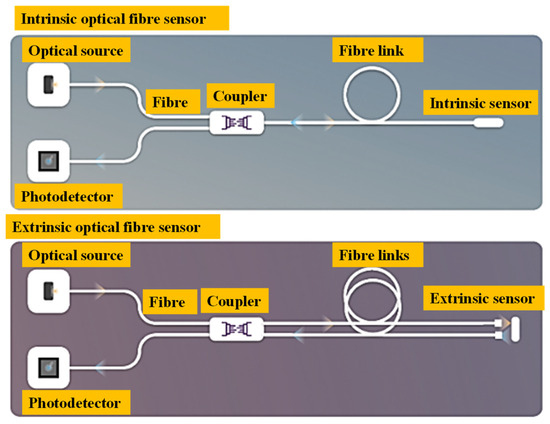Enhance Your Fibre Optic Projects With an Effective Size Analyser
The assimilation of an efficient size analyser right into fiber optic jobs serves as a pivotal aspect in accomplishing precision and consistency. By facilitating exact size measurements, these analysers not only boost the top quality of setups however also minimize possible compatibility problems among parts.
Value of Size Measurement
Determining the size of fiber optic cables is a critical task that makes sure optimum efficiency and integrity in communication systems. Accurate diameter measurement is vital for different factors, primarily for maintaining signal stability and reducing loss. A wire's diameter directly influences its capability to send light properly; inconsistencies from the defined size can bring about increased depletion, which impacts the general efficiency of the network.
Moreover, exact measurement is critical throughout the installment and upkeep of fiber optic systems. An inappropriate fit in between cords and ports can lead to signal destruction or full failing of interaction web links. By making sure that diameters are within defined tolerances, specialists can enhance compatibility in between elements, resulting in better system dependability.
In addition, size measurement plays a substantial function in quality control throughout production. Consistency in the diameter of fiber optic cable televisions is important for ensuring consistent performance throughout different batches. optical fibre diameter analyser. This uniformity helps suppliers keep industry requirements and cultivates self-confidence among end-users
Features of a Reliable Analyser
An efficient analyser for fiber optic jobs must integrate several crucial features that boost accuracy and use in diameter dimension. Firstly, high-resolution optical sensing units are vital for precise diameter analyses, enabling individuals to spot also the slightest variants in fiber thickness. These sensors ought to be enhanced by advanced calibration systems, guaranteeing constant efficiency throughout different conditions and products.
Second of all, an easy to use user interface is crucial for helping with convenience of procedure. This includes intuitive software that enables for smooth information input and result, in addition to visual representations of the measurements taken. A mobile design improves usability in numerous field environments, making it less complicated to conduct assessments on-site.
Additionally, the analyser ought to support several dimension modes, accommodating numerous fiber kinds and applications. The capability to shop and fetch historic information is one more important feature, allowing users to track performance over time and make informed choices.
Advantages for Fiber Optic Projects
Applying a size analyser in fiber optic jobs provides considerable benefits that considerably boost task effectiveness and high quality. One of the primary advantages is the ability to ensure precise measurements of fibre size, which is essential for maintaining optimal efficiency in fibre optic systems. Exact diameter analyses aid in the recognition of incongruities that might lead to signify degradation or loss, therefore making certain high-grade transmission.
Furthermore, using a size analyser enhances the quality control procedure. By automating dimension tasks, project groups can lower the moment spent on manual inspections, bring about faster project conclusion and reduced work expenses. This performance additionally permits more strenuous testing protocols, leading to improved item reliability.
Additionally, uniformity in fibre size dimensions advertises compatibility with other fibre optic parts, lessening the risk of setup mistakes and improving total system efficiency. The incorporation of a size analyser not only help in maintaining market standards however also cultivates confidence in task deliverables.
Combination Into Existing Workflows
Integrating a diameter analyser into existing operations can dramatically improve the operational effectiveness of fiber optic projects. By flawlessly integrating this modern technology, teams can accomplish precise dimensions that are critical to keeping the stability and efficiency of fibre optic systems. This assimilation permits real-time information collection and analysis, which can be vital during the manufacturing and installment phases.
Moreover, the capacity to automate size measurement processes decreases the possibility for human mistake, guaranteeing constant quality assurance throughout the task lifecycle. The information created can be conveniently shared across platforms, helping with partnership amongst engineers, service technicians, and project managers. This accessibility enhances decision-making and speeds up task timelines.

Choosing the Right Size Analyser
When choosing a diameter analyser for fiber optic projects, it is important check here to consider numerous essential factors that straight impact dimension accuracy and functional effectiveness. Initially, the resolution and precision of the analyser should line up with the specific needs of your project. Higher resolution tools can discover minute variations in size, which is critical for making certain ideal performance in fiber optic systems.
For projects with limited target dates, a diameter analyser that uses quick data acquisition can dramatically enhance performance. Additionally, take into consideration the analyser's compatibility with existing systems and software.
An additional crucial element is the range of sizes the analyser can fit. By thoroughly evaluating these variables, you can choose a diameter analyser that boosts the performance and accuracy of your fibre optic projects.
Verdict
In final thought, the combination of an efficient size analyser is vital for enhancing fiber optic jobs. Precise size measurements make certain optimal efficiency and reliability while decreasing setup errors. Advanced attributes help with real-time information collection and compliance with sector requirements, ultimately elevating the high quality of deliverables. By prioritizing the selection and execution of a proper analyser, project effectiveness is significantly boosted, paving the method for effective outcomes in fibre optic applications.
A cord's size directly affects its ability to transfer light properly; deviations from the specified size can lead to raised attenuation, which impacts the total efficiency of the network.
